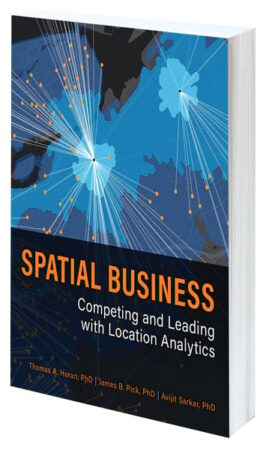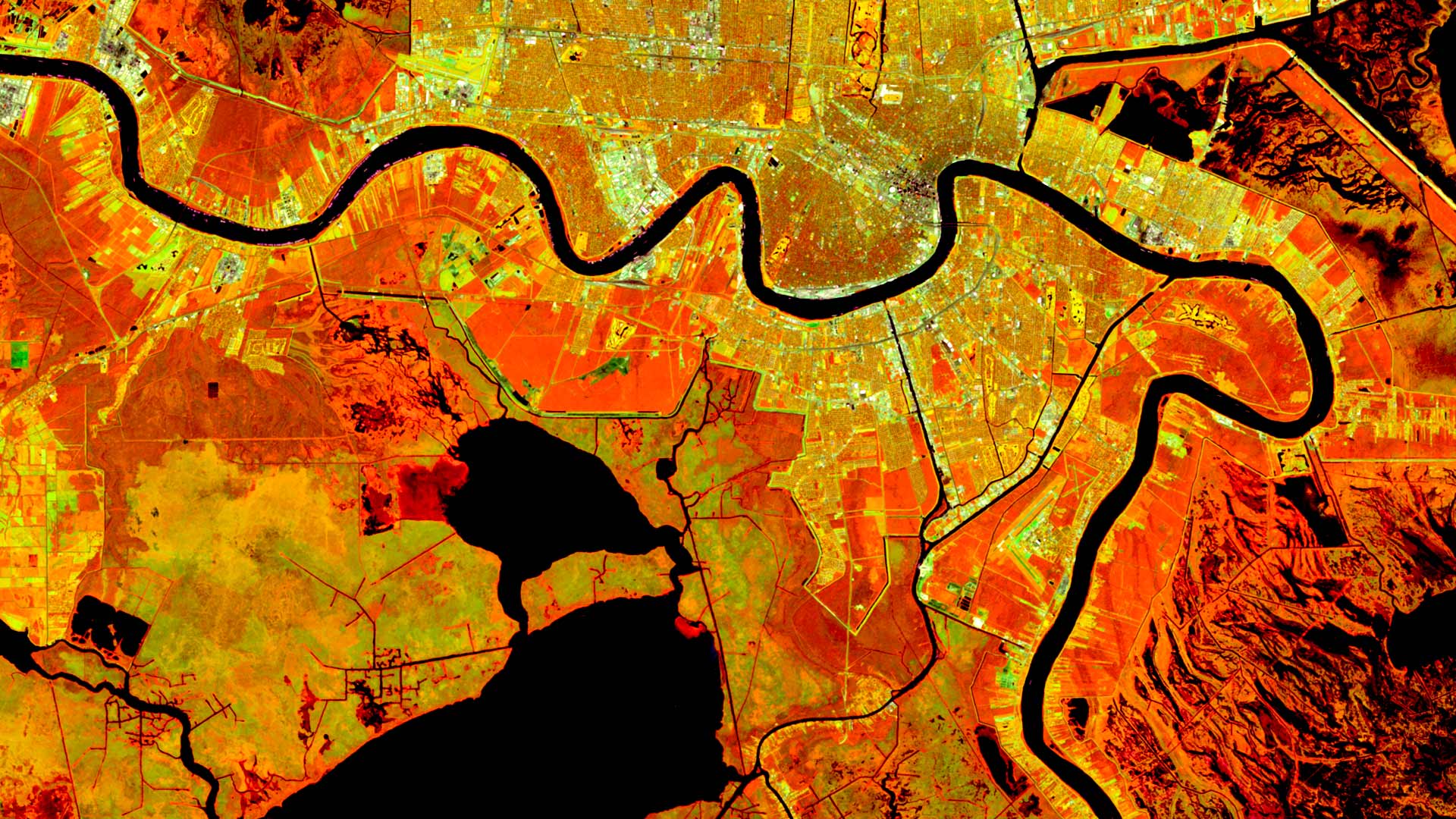For several decades, industries and governments have been undergoing a digital transformation wherein they employ ever more complex software to achieve their missions. Each digital advancement presents new challenges, and business schools must adapt their curricula to show students how to leverage the latest technology not only for the benefit of their companies but also for the greater good of society.

Dr. Thomas Horan, the H. Jess and Donna Senecal endowed dean of the School of Business & Society at the University of Redlands in Redlands, California, has spent nearly three decades teaching graduate students and business professionals how to use GIS to advance their careers, improve their organizations, and better serve their communities. He recently spoke to Esri about the changing landscape of location intelligence in business schools and the corporate world.
Throughout your career, how have you supported academia in responding to business organizations’ needs for GIS talent and innovation?
My journey started in 1997 when I was asked to teach a class in GIS at Claremont Graduate University in Claremont, California. I said, What’s that? Then I went to Esri, got my floppy disks of software, and started teaching GIS. At the time, a lot of the applications for GIS were in the public sector, and that was the orientation for the technology. With the rise of technology in the workplace, universities needed to adjust the training they provided in GIS to not just be about the technology but also about its use within public, private, and nonprofit organizations. Now, spatial business should be fully integrated into business school curriculum. At the University of Redlands, we partner with Harvard Business School, the University of Minnesota, and others to continually develop new research, courses, and programs in GIS and location analytics.
GIS and location intelligence can be applied within many types of organizations. How do spatially mature businesses adopt GIS, and what makes them successful?
We’ve done surveys on this, and organizations that fully utilize GIS and location analytics have five things in common. First, location analytics is perceived as valuable, whether it’s used in marketing, sales, or operations. Second, the use of location analytics is tied to a clear business strategy and is done in service of reaching the organization’s overall goals. Third, there is a champion for geospatial technology in the C-suite, whether that’s the chief financial officer, chief information officer, or chief executive officer. Fourth, these organizations have best-in-class technology. You can have great ideas, but if the technology isn’t up to the task, you won’t be successful. Fifth, the companies can articulate, quantitatively and/or qualitatively, the return on investment they receive from using location intelligence.
One of the key concepts we have developed with our collaborators is the location value chain. It builds on Harvard Business School economist Michael Porter’s notion of the value chain, which evaluates a company’s competitive advantage through identifying the activities that lead to higher profits or lower costs. The location value chain says that in each part of the value chain—marketing, sales, operations, supply chains, or sustainability—value can be added by understanding the spatial dimension, such as where desirable customers are or where supply chain disruptions happen. What’s more, the value chain represents different entry points for a company to use location analytics—for example, in the marketing or operations departments. Then as time goes on, GIS often migrates from one of those entry points to other areas of the organization.
As the demand for talent with business and geospatial skills has grown, how has the University of Redlands School of Business & Society incorporated GIS and location analytics into its curriculum and industry research?
The first thing we did was make sure that we fully integrated GIS into our curriculum. At the undergraduate level, GIS for Business is a required course. At the Master of Business Administration level, it’s a concentration. For a Master of Science in Business Analytics, it’s a cornerstone of our data science classes. And in our Master of Science in GIS, we’re working to have it include a business analytics track.
We’ve also integrated it into research. For example, industry clustering is an area that the University of Redlands studies a lot. This involves understanding regions and how predominant industries—such as medical device development or automotive manufacturing—get established and grow in specific places. Where a company is located matters in terms of access to talent, proximity to suppliers, and the presence of potential customers. This notion of industry clusters is very well suited for studying with location analytics and has implications for where organizations should establish themselves.
In addition, outreach in the community is important because not all business education occurs within the four walls of a business school. We’ve put on a spatial business academy with managers and directors from big-name organizations, and we’ve done events at companies where students use their location analytics skills to solve real-world problems. Companies have also helped us write case studies, enabling us to bring these outside-the-classroom learnings back into the curriculum.
The University of Redlands School of Business & Society recently evolved its name and mission to include “society.” What external shifts influenced this update?
We saw the business climate changing. In 2019, the Business Roundtable said that the purpose of business is broader than profitability and includes committing to benefiting multiple stakeholders, from customers, employees, and suppliers to communities and shareholders. When the pandemic hit in early 2020, it became obvious that a business cannot be contemplated outside the context of the societal conditions in which it exists.
These events motivated us to expand our offerings and curriculum to include examining business functions and their impacts; evaluating different styles of purposeful leadership; and spatially analyzing business’s effects on communities, particularly pertaining to social responsibility and the environment. This is the new business education.
As we became the School of Business & Society, we were presented with a wonderful opportunity to merge with the Presidio Graduate School in San Francisco, California. It has a distinctive MBA in Sustainable Solutions and an inspiring network of alumni. Once Presidio moves its graduate programs to our Marin campus, the University of Redlands will offer a strong Northern California component to its business education.

Esri Press recently published Spatial Business: Competing and Leading with Location Analytics, which you coauthored with two of your University of Redlands colleagues, Dr. James Pick and Dr. Avijit Sarkar. What were the key drivers behind publishing that material?
When we began offering location analytics courses within our business school, there was no defining book about it. There are lots of very good books on adjacent topics, but there was nothing that we could use as a cornerstone for connecting GIS and location analytics to the broad business functions we embrace. So we wrote the book on that, and we are very proud of it.
The book opens with several chapters on the fundamentals of spatial business before getting into how these concepts are used to maximize organizational, corporate, and social value. It covers how organizations achieve spatial excellence and the role of leadership in making this happen. It also contains case studies that demonstrate how to apply location analytics in a business setting. We wrote Spatial Business to be useful for both business students and professionals who want to advance their careers via these ideas and methods.
When you look ahead, where do you see the business applications of GIS heading, and what role will business education play in shaping that future?
We are very excited about the future because we see greater awareness of the value of location analytics in a range of organizations. New GIS applications geared toward business continue to evolve and get students interested in the field. My fellow business educators and I have seen how the technology works for marketing, operations, and sales. Now we need to push the envelope on how socially responsible and responsive companies use location analytics not only to be successful businesses but also to be good corporate citizens.

